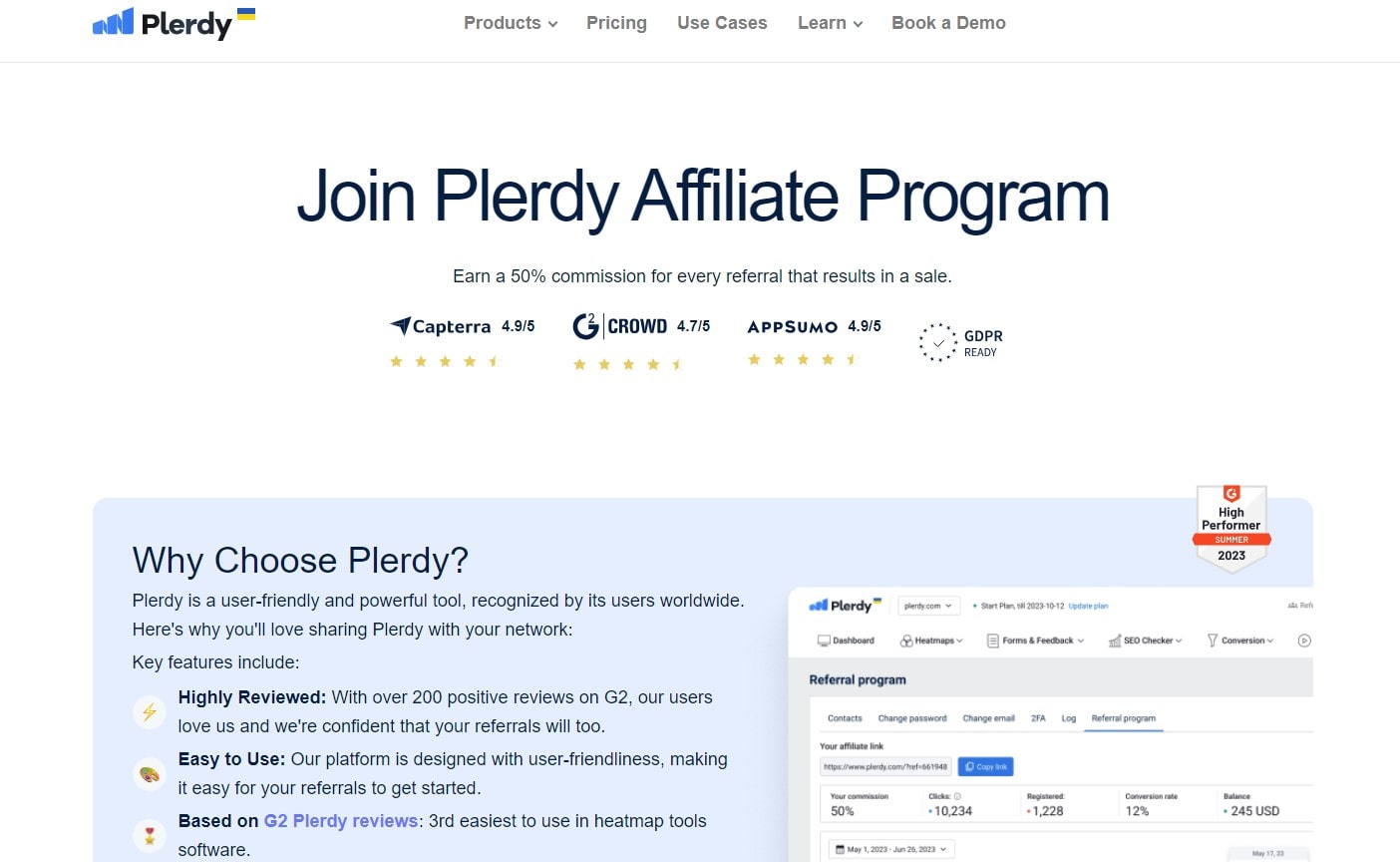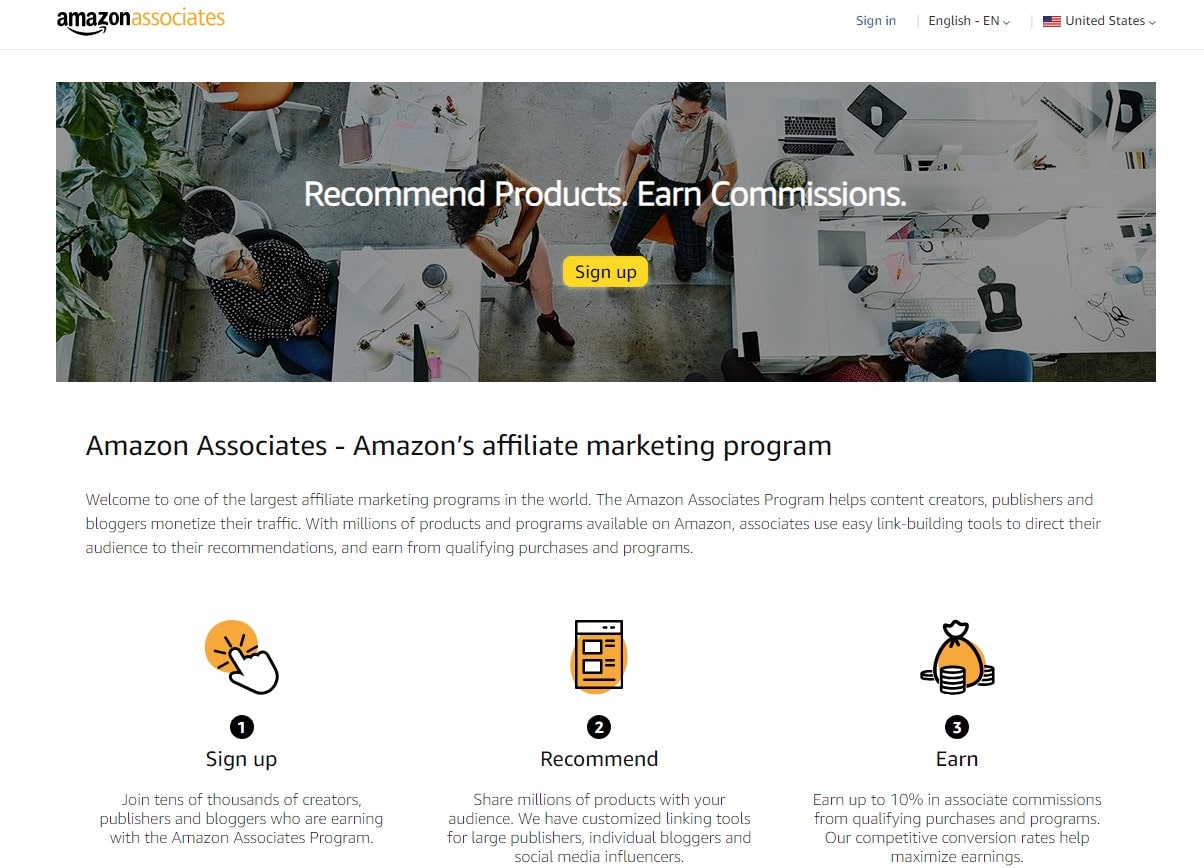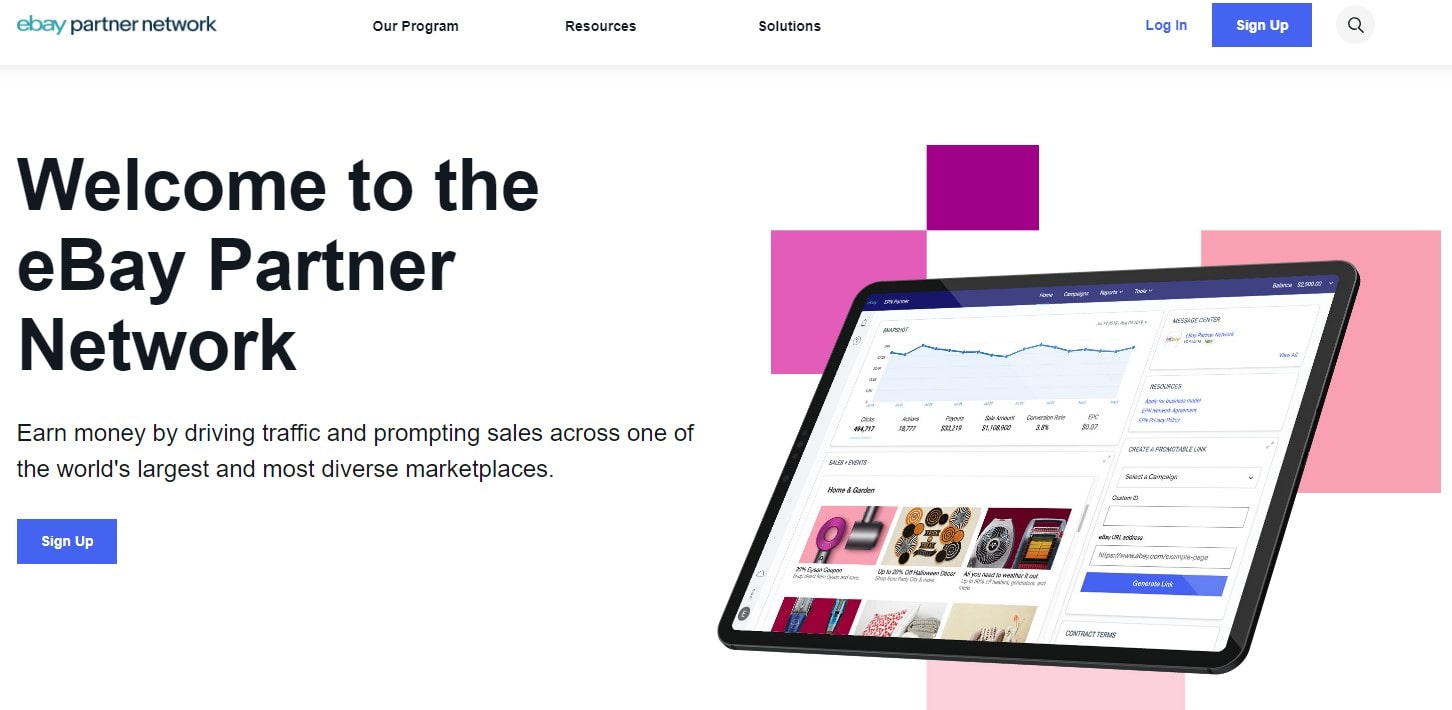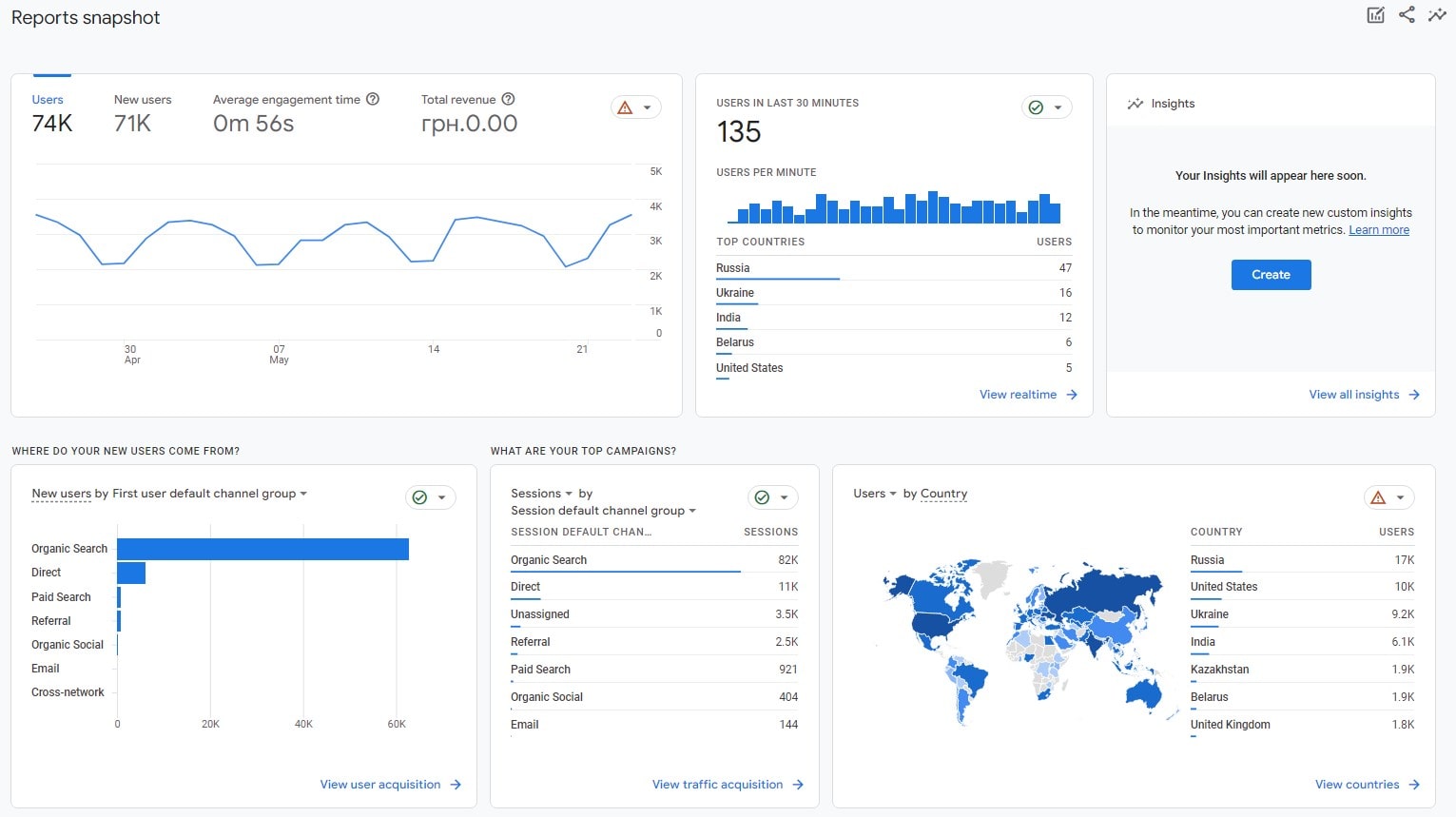Whether you’re a blogger in the beauty niche or a YouTuber exploring technology, affiliate marketing in 2023 offers boundless opportunities to grow your business and monetize your passion ⚡. Here’s what to expect in this article:
- 20 tailored tips to enhance your affiliate marketing strategies.
- Real-life examples from niches like travel, wellness, and e-commerce.
- Actionable insights that resonate with marketers of varying expertise.

Don’t underestimate the power of precise tools in your affiliate marketing journey. Utilizing the Plerdy tool, a top-notch solution for Conversion Rate Optimization (CRO) & User Experience (UX), you’ll amplify your conversion rates and create engaging user experiences. Ready to dive in and explore these remarkable tips and tools that will elevate your affiliate marketing strategies? Let’s get started on the path to success, and don’t forget to explore Plerdy to give your marketing efforts a remarkable boost ⚡
Understand What Affiliate Marketing Is
Affiliate marketing unfolds as a robust online revenue generator, transforming everyday web surfers into adept marketers. In this vibrant ecosystem, an affiliate marketer promotes products or services from a variety of industries – from fashion to tech – using a personalized affiliate link provided by the merchant. Every click that converts into a sale nets the affiliate marketer a tidy commission.
Here’s how the process typically plays out:
- A marketer joins an affiliate program or network, such as Amazon Associates or ClickBank.
- The marketer receives a unique affiliate link connected to their account.
- The marketer promotes this link through various channels: a blog, social media, or email newsletters.
- A visitor to the marketer’s platform clicks on the link and makes a purchase.
- The marketer earns a piece of the profit from each sale made through their affiliate link.
Embracing the life of an affiliate marketer demands persistence, strategic planning, and a knack for identifying profitable partnerships. But when done right, affiliate marketing can be a lucrative path, turning the tide of online browsing into a thriving income stream. Whether you’re passionate about travel, health and wellness, or home decor, there’s an affiliate marketing opportunity waiting for you. This company model might yield big profits with the appropriate approach.
How Affiliate Marketing Works

Affiliate marketing is a symbiotic relationship that spans across various digital platforms. In essence, it’s a sales tactic where a marketer promotes a third-party product and earns a commission for every successful sale made via their unique affiliate link. It’s a win-win scenario – businesses get increased exposure and sales, and marketers gain a commission for their promotional efforts.
Let’s drill down into how it operates:
- An affiliate marketer partners with a business that offers an affiliate program be it in niches like fitness, education, or beauty.
- The business provides the marketer with a unique affiliate link that tracks any sales originated from their marketing efforts.
- The marketer then plugs this link into their content – blog posts, social media posts, email newsletters, and more.
- When an interested reader clicks on this link and makes a purchase, the system logs the sale as originating from the marketer.
- The marketer receives a commission from the business for bringing in that sale.
It’s worth noting that affiliate marketing demands both savvy promotional skills and a firm grasp on your target audience’s interests and needs. Affiliate marketers connect people to useful items. If you’re able to generate value and establish trust, the stage is set for a rewarding affiliate marketing journey, transforming digital interaction into a powerful source of income.
Types of Affiliate Marketing
Diving into the sphere of affiliate marketing, one finds a host of diverse methods that seasoned marketers leverage to turn a profit. Each affiliate marketing type is unique, catering to different marketing styles and audience preferences. By understanding these distinct forms, an affiliate marketer can better tailor their strategy to optimize returns.
Here are the primary types of affiliate marketing:
- Unattached Affiliate Marketing: This is the most basic form where the marketer has no strong connection with the product or the audience. They typically use pay-per-click advertising to promote affiliate links, like promoting language learning software on a language-related blog.
- Related Affiliate Marketing: Here, the marketer has an audience but no personal connection with the product. For instance, a fitness influencer might promote workout equipment without necessarily using it themselves.
- Involved Affiliate Marketing: In this form, the marketer uses and vouches for the product, often having a robust audience. An example is a tech blogger who reviews gadgets and includes affiliate links to the reviewed products.
Each method has advantages and requires different levels of audience interaction and product endorsement. The marketer’s role in this bustling e-commerce ecosystem is to determine which style aligns best with their brand, audience, and personal commitment level, ensuring an effective and profitable affiliate marketing journey.
Preparing for Affiliate Marketing

1. Determine Your Niche
In the expansive universe of affiliate marketing, pinpointing your niche is akin to setting your compass – it guides your actions, informs your strategies, and ultimately leads you to your treasure. A well-defined niche provides clarity and focus, helping you target a specific audience and stand out among a sea of generic marketers.
So, how do you determine your niche? It boils down to a blend of passion, knowledge, and market demand. Let’s break it down:
- Passion: It’s easier to promote and create content around a topic you’re passionate about. Let’s say you’re an avid reader – promoting books and related merchandise would be a great fit.
- Knowledge: If you’re an expert in a certain field, like health and wellness or tech gadgets, harness that knowledge. Your expertise will lend authenticity to your content, helping to build trust with your audience.
- Market Demand: Regardless of your passion and knowledge, there needs to be a demand for the products in your niche. Tools like Google Trends or Keyword Planner can offer insights into popular search terms and product demand.
Identifying your niche is the first step towards doing so effectively, creating a symbiotic relationship between your passion, the market, and the audience’s needs.
2. Research Affiliate Programs
Navigating the world of affiliate marketing requires that you align yourself with the right partners. To do so, a deep-dive into potential affiliate programs is essential. This crucial step enables you to unearth those that not only resonate with your chosen niche but also offer lucrative returns and a supportive, reputable partnership.
But what does researching affiliate programs entail?
- Profit Potential: Look for programs that offer generous commission rates, ensuring your efforts yield rewarding returns. For instance, if you’re in the tech niche, partnering with companies like Bluehost can yield high commissions.
- Relevance to Your Niche: The program should align with your niche and audience’s interests. If your blog revolves around outdoor activities, partnering with Patagonia’s affiliate program might be a good match.
- Product Quality: Consider the quality and popularity of the products you’d be promoting. Brands with strong market reputation and high-quality offerings, like Apple or Sony, often yield better conversion rates.
- Program Reputation: Research the program’s track record. Is it reliable in payments? Does it provide good support for its affiliates? Gaining insights from other affiliate marketers can shed light on this.
By carefully vetting potential affiliate programs, you set the stage for a prosperous marketing journey. The ideal program marries your interests with market demand, enabling you to provide valuable recommendations to your audience while reaping substantial financial rewards.
3. Set Clear Marketing Goals
Without a beacon of defined goals, your affiliate marketing efforts may flutter aimlessly in the digital wind. Setting clear, concrete goals paves the road to success, guiding your strategic decisions and providing a framework to measure your progress.
To set your marketing goals, consider these aspects:
- Audience Growth: You might aim to grow your audience by a certain percentage each month. A larger audience could mean more clicks on your affiliate links.
- Conversion Rate Improvement: This could be another goal where you aim to convert more of your audience into buyers. Higher conversion rates typically mean more commission for you.
- Brand Strengthening: You might aim to become a thought leader in your niche, thus enhancing your brand’s trustworthiness. This credibility can, in turn, lead to more effective affiliate promotions.
- Revenue Targets: Set a specific income goal, such as earning a certain amount from affiliate commissions in a given period.
With these goals in mind, your affiliate marketing strategies acquire a clear sense of direction. The result? Better-focused efforts, more effective promotions, and, ultimately, a more rewarding affiliate marketing journey. Remember, the key to setting effective goals is to make them Specific, Measurable, Achievable, Relevant, and Time-bound – SMART.
4. Invest in a Quality Website
As an affiliate marketer, your website is akin to your digital storefront—it’s the hub where potential buyers meet the products you endorse. Thus, investing in a quality website is crucial, as it elevates user experience, strengthens your brand image, and optimizes conversion rates.
Consider the following elements when crafting a top-notch website:
- Aesthetically Pleasing Design: A clean, attractive layout draws users in and makes browsing enjoyable. Imagine running an affiliate site for high-end fashion brands—an elegant, minimalist design would mirror the sophistication of the products.
- Easy Navigation: Ensure your site is simple to navigate, with clear menus and logical categories.
- Fast Load Speed: A slow-loading site can frustrate visitors and prompt them to leave. Make sure your site loads quickly to keep users engaged.
- Mobile Compatibility: As more users surf the web on their mobile devices, ensuring your site is mobile-friendly is essential. This is especially crucial for affiliate marketers in niches like travel, where people often research on the go.
- Trustworthy and Secure: A secure website is vital for user trust, especially if you collect personal information. Ensure your site uses HTTPS and takes other necessary security measures.
Building Your Affiliate Marketing Platform

1. Optimize Your Website for SEO
An affiliate marketer’s website thrives on visibility—the more your content shines in search engine results, the more traffic and potential customers you’ll attract.
Begin by identifying relevant keywords—terms and phrases your target audience might use to find your affiliate products.
Here are some key areas to consider when optimizing your website for SEO:
- Incorporate Keywords: Seamlessly weave your targeted keywords into your website’s content, titles, meta descriptions, and image alt tags. Remember, balance is key—overuse can lead to penalties.
- Deliver High-Quality Content: Create comprehensive, engaging, and unique content that provides value to your audience.
- Improve User Experience: A well-structured, easy-to-navigate, and fast-loading website can enhance user experience, reducing bounce rates and improving your SEO.
- Build High-Quality Backlinks: Collaborate with reputable websites within your niche for guest posting and partnerships to gain high-quality backlinks, which can boost your site’s credibility and rankings.
A well-optimized website is an affiliate marketer’s key to harnessing the power of organic search, helping you reach the right audience and maximize conversions.
2. Develop a Content Strategy. Produce Traffic-Generating Content.
Content is the lifeblood of any affiliate marketing venture. A well-planned content strategy can serve as your road map to success.
First, identify your target audience. For instance, if you are promoting plant-based protein supplements, your primary audience could be health enthusiasts and vegans. Understand their pain points and create content that addresses their needs.
Next, brainstorm content ideas relevant to your niche and audience. Here are a few examples:
- Informative blogs and articles about the benefits of plant-based proteins.
- Case studies highlighting the positive impacts of switching to plant-based proteins.
- Social media posts with quick tips for integrating plant-based proteins into daily meals.
Your content should serve two primary purposes:
- Educate and Engage: Your content should provide value, solve problems, and engage your audience. This builds trust and credibility with your audience, which can increase conversions.
- Promote Affiliate Products: Naturally incorporate your affiliate products into your content. Subtle promotion is often more effective than hard sell techniques.
Through strategic content creation, an affiliate marketer can turn their website into a hub of information and a platform for promoting their affiliate products, driving both traffic and conversions.
3. Ensure Mobile Compatibility of Your Site
Ensuring mobile compatibility isn’t just a recommendation for affiliate marketers—it’s a necessity. With the significant uptick in mobile device usage, if your website fails to load smoothly on smartphones or tablets, you risk losing a large chunk of potential conversions.
First, run a mobile-friendly test. This includes the site’s loading speed, its responsiveness, and the visibility of your content on small screens.
Next, consider implementing a responsive design. A responsive website automatically adapts to the device’s screen size—be it a smartphone, tablet, or desktop. This ensures a smooth user experience, regardless of how your audience accesses your site.
Here are a few steps to optimize your website for mobile devices:
- Simplify Navigation: Opt for a clean, minimalistic design to ease navigation. A clutter-free interface enhances the mobile user experience.
- Optimize Images and Videos: Compress and resize media files to enhance the loading speed of your website on mobile devices.
- Use Readable Fonts: Small screens require larger, clearer fonts.
Joining Affiliate Programs

1. Find the Best Affiliate Programs
Sifting through the sea of affiliate programs to identify the most rewarding ones is a critical task for every affiliate marketer. This involves careful analysis, comparing different aspects of each program to find one that aligns with your marketing goals.
Consider the following factors when choosing an affiliate program:
- Commission Rates: An important metric. High-ticket items or programs offering substantial commission rates can result in higher earnings per sale.
- Products or Services: Choose products or services that resonate with your audience. For instance, if you operate a fitness blog, promoting gym equipment or health supplements would be a suitable choice.
- Vendor Reputation: Do thorough research on the product vendor. A reputable vendor means quality products which can lead to higher conversion rates.
- Cookie Duration: Longer cookie durations provide a wider window for potential customers to make a purchase, leading to more potential earnings.
In the affiliate marketing landscape, niches like tech gadgets, travel experiences, and personal finance products often attract substantial audiences. Affiliate programs like Amazon Associates, ShareASale, or CJ Affiliate have a broad range of products and tend to be popular among affiliate marketers.
2. Understand How to Apply for Programs
Embarking on the journey of affiliate marketing involves understanding how to apply for programs. Each program has a unique process, but there are some universal steps:
- Register: Start by creating an account on the platform that hosts the affiliate program.
- Complete Application: Most programs require you to fill out an application. It generally involves providing details about your website or blog, your marketing techniques, and your intended audience.
- Wait for Approval: After submission, wait for the application review.
- Get Affiliate Links: Once approved, you can access your unique affiliate links and start promoting the products.
As an affiliate marketer in the health and wellness niche, for example, you could apply for programs offered by supplement manufacturers or fitness equipment companies. Carefully following each program’s application process can pave the way to a fruitful affiliate marketing venture. Always focus on presenting your platform as an invaluable resource for your chosen audience, and you’ll boost your chances of approval.
3. Familiarize Yourself with Program Terms and Conditions
In the landscape of affiliate marketing, understanding program terms and conditions forms the bedrock of your marketer journey. These terms outline rules, expectations, and potential rewards – critical to achieving success without stumbling over compliance issues.
Let’s sketch a broad picture of key terms you need to wrap your head around:
- Commission Structure: This spells out how much you’ll earn for each sale. Tech product affiliates, for example, might offer a flat rate per sale, while a fashion retailer may provide a percentage of each transaction.
- Payment Schedule: How and when will you get paid?
- Promotional Guidelines: Every program sets boundaries on how their products can be advertised. Some companies may disallow email marketing or have specific rules about social media promotion.
- Cookie Duration: This determines how long after a potential customer clicks your link, you can still receive credit for a sale. For instance, in the travel niche, some hotel booking affiliates offer 30-day cookies.
By immersing yourself in these details, you’ll bypass common pitfalls and master the marketing of each specific program. This attentiveness can lead to better, more sustainable returns, shaping your affiliate venture into a rewarding success story.
4. Produce Traffic-Generating Content
Crafting content that drives traffic forms the core of affiliate marketing. Every marketer understands the pivotal role of top-tier content – it’s the magnet that attracts potential customers, leading them down the path towards conversion.
Let’s dive straight into actionable strategies for producing such compelling content:
- Integrating Affiliate Links in Blog Posts: Take, for instance, the fitness niche. Write detailed articles on ‘best home workout routines’, seamlessly incorporating affiliate links to fitness equipment.
- Product Reviews and Comparisons: Let’s say you’re in the tech niche. Create comprehensive reviews of laptops, juxtaposing different models, thus guiding consumers in their purchase decisions.
- Instructive ‘How-to’ Guides: For a marketer in the DIY crafts niche, creating step-by-step craft guides integrated with product links can be an effective draw.
- Video Content: As an affiliate marketer in the beauty niche, video tutorials on makeup application or skincare routines, embedding product links can skyrocket traffic.
This creation of engaging, relevant, and practical content, knitted together with your affiliate links, not only drives a higher traffic volume but also cultivates trust with your audience. That’s the recipe for success in the realm of affiliate marketing – driving traffic while building a loyal audience base.
Implementing Affiliate Marketing Strategies

1. Strategically Use Affiliate Links in Your Content
In affiliate marketing, smart placement of affiliate links within your content is crucial. Rather than peppering your text indiscriminately, incorporate them strategically. Ensuring a seamless fit can make a massive difference to your conversion rates.
Here’s how you can strategically employ affiliate links in your content:
- Engaging Blog Posts: Consider the home decor niche. Write compelling posts about ‘5 Essentials for a Cozy Living Room’ and weave in your affiliate links within the recommendations.
- In-depth Product Reviews: For the tech market, providing detailed analyses of latest smartphones while subtly inserting affiliate links in your verdict section can be a powerful tactic.
- Useful ‘How-to’ Guides: Imagine being an affiliate marketer for culinary gadgets. Pen down delectable recipes and include the tools required for cooking, turning these into affiliate links.
- Informative Video Tutorials: In the beauty industry, affiliate links can find a home in descriptions or during the video’s progression of makeup or skincare tutorials.
The art of affiliate marketing lies in crafting top-notch content while embedding your affiliate links in such a way that it feels organic, not forced. Maintaining the balance between providing value and promoting products is crucial for maximizing your click-through and conversion rates. By being purposeful and strategic with your affiliate links, you can hit the bullseye in your affiliate marketing journey.
2. Implement Email Marketing Campaigns
Email marketing holds significant power in the affiliate marketer’s toolbox, becoming a bridge between your audience and the products you promote. The strategy thrives on crafting engaging content that sparks curiosity, urging readers to explore your affiliate links.
Start with gathering a robust subscriber list – a task well-achieved through an irresistible lead magnet. Suppose you’re an affiliate for fitness equipment. An enticing “7-Day At-home Workout Plan” could serve as an effective magnet.
Once you’ve laid down the foundation, begin your email marketing journey:
- Welcome Emails: Initiate conversations by sending warm, personalized welcome emails. Offer insights into what subscribers can expect in the future.
- Product Reviews: Write comprehensive reviews of your affiliate products. In the digital marketing niche, this could involve comparing different SEO tools.
- Exclusive Offers: Convey limited-time discounts or exclusive deals on affiliate products, fostering a sense of urgency. This works exceptionally well in the fashion industry.
- Valuable Content: Distribute ebooks, infographics, or tutorials related to your affiliate products. If you’re promoting a coding platform, ‘A Beginner’s Guide to Python’ could work wonders.
As an affiliate marketer, remember, you’re not just selling products – you’re providing solutions, and your emails should reflect this mission.
3. Leverage Social Media for Promotion
In the era of digital engagement, social media has become a cardinal point for affiliate marketers to expand their audience reach and promote products. A well-crafted social media strategy goes beyond regular postings—it creates a virtual persona that embodies your brand values and communicates with your audience effectively.
Take Instagram, for instance. An affiliate marketer in the fashion industry can make use of Instagram’s visually-focused platform to showcase affiliate products—apparel, accessories, footwear—in action. Styling videos, outfit-of-the-day posts, and grid aesthetics add flair to the promotion.
To leverage social media in affiliate marketing, follow these tips:
- Engage Regularly: Consistency is key. Regularly posting content keeps your audience intrigued and invested.
- Use Storytelling: Captivate your audience with narratives around the products you’re promoting. For instance, a marketer in the travel industry can share personal anecdotes from a stay at an affiliate-linked hotel.
- Leverage User-Generated Content: Encourage your followers to share their experiences with your affiliate products, adding a sense of authenticity.
- Employ Relevant Hashtags: Drive your content’s visibility by using trending and relevant hashtags.
Your journey as an affiliate marketer on social media is about creating connections, sharing experiences, and adding value. Dive into this digital ocean and make waves with engaging content and strategic promotion.
4. Consider PPC Advertising for Additional Reach
Pay-Per-Click (PPC) advertising offers a potent method for affiliate marketers to augment their promotional efforts. When expertly executed, PPC advertising can propel your affiliate links into the limelight, leading to enhanced reach and increased conversions. For example, a marketer in the home goods niche might use PPC ads to highlight affiliate-linked cookware during the holiday season, capitalizing on heightened demand.
To maximize PPC advertising in your affiliate marketing strategy, consider these tips:
- Select Keywords Wisely: Opt for keywords that mirror the interests of your target audience. A marketer in the fitness niche might target phrases like “best running shoes” or “durable yoga mats.”
- Construct Click-Worthy Ad Copy: Ensure your ad text aligns with the targeted keywords and clearly communicates the benefits of the product you’re promoting.
- Harness Landing Pages: Make your affiliate links shine by designing dedicated landing pages that provide comprehensive product details and compel visitors to make a purchase.
- Measure and Optimize: Regularly track your ad performance. Use insights to finetune your campaigns for better results.
PPC advertising in affiliate marketing is like turning on a spotlight on a dark stage—it illuminates your offerings, draws the audience’s gaze, and puts the focus squarely on what you’re promoting. With strategic planning and execution, PPC can add a power-boost to your affiliate marketing endeavors.
Monitoring and Improving Your Affiliate Efforts

1. Regularly Track and Analyze Your Performance
Performance tracking and analysis stand at the core of any successful affiliate marketing strategy. Regular assessments enable marketers to understand what resonates with their audience, thereby making it possible to pivot or double down on strategies. For example, an American marketer health supplement niche might find that blog posts about nutritional benefits drive more conversions than generic product reviews.
Here’s how to approach tracking and analyzing performance in affiliate marketing:
- Set Up Analytics: Tools like Google Analytics help keep tabs on key metrics such as traffic sources, click-through rates, and conversions.
- Monitor Affiliate Networks: Most networks offer built-in analytics to evaluate your campaign performance, shedding light on what works and what doesn’t.
- Split Test: Test different approaches to ascertain what resonates best with your audience. For example, marketers in the beauty niche might experiment with video content versus written reviews.
- Evaluate and Adjust: Continually measure your results and tweak your strategy as needed.
Remember, consistency is king when it comes to tracking. Regularly dive into your data and draw insights to keep your affiliate marketing strategy on a growth trajectory. The ongoing process of monitor, analyze, and optimize ensures you keep your finger on the pulse of your campaign’s performance and your audience’s preferences.
2. Use A/B Testing to Optimize Conversion Rates
Maximizing conversion rates is the goalpost for every marketer in the affiliate industry. By employing A/B testing, you unravel the magic formula that ticks for your audience, leading to enhanced conversions. This practice entails presenting two variants (A and B) to different segments of users to identify which performs better. For example, if you’re affiliate marketer e-book niche, A/B testing could involve experimenting with different landing page designs, call-to-action phrases, or promotional techniques.
Take a gander at how to make the best of A/B testing in affiliate marketing:
- Define Your Goal: Clear objectives could range from increased click-through rates, improved conversions, or more affiliate sales.
- Create Variants: Design your ‘A’ and ‘B’ versions with clear differences, like changing the headline, altering the color scheme, or shifting the placement of your affiliate links.
- Implement Tests: Use specialized software to randomly present your A and B variants to your visitors.
- Gather and Analyze Data: Tools such as Google Analytics can provide invaluable insights into user behavior and preferences.
- Implement Changes: Based on your findings, roll out the winning variant to your entire audience.
Every tweak, no matter how minute, can have a significant impact on conversion rates. Therefore, constant A/B testing offers an effective way for affiliate marketers to continually optimize their campaigns and rake in higher commissions.
3. Scale Up Successful Campaigns
Scaling up successful campaigns is a milestone in every marketer’s affiliate journey. Imagine you’ve struck gold with a campaign in the fitness equipment niche, reeling in substantial profits. Instead of resting on your laurels, it’s time to level up – broadening the reach, increasing the budget, and diversifying the channels.
Unleash the potential of your affiliate marketing efforts with the following steps:
- Identify Successful Campaigns: Sift through your campaigns, keeping an eagle’s eye on those yielding the highest return on investment.
- Boost Investment: Pour more resources into these high-performing campaigns. Remember, it takes money to make money.
- Expand Reach: Broaden your targeting criteria to reach more potential customers. For instance, if your fitness gear is a hit in California, why not try Texas?
- Diversify Channels: Extend your promotion beyond your primary platform. If your blog is buzzing, consider amplifying your campaign on social media or via email marketing.
- Optimize Continually: Scaling up doesn’t mean setting and forgetting. Keep a close eye on your expanded campaigns, tweaking elements for sustained success.
Scaling up successful campaigns allows affiliate marketers to ride the wave of a winning formula. The path to profits is paved with calculated risks – and scaling up is a leap worth taking.
Conclusion
Remember that knowing your target market and building relationships with them are the cornerstones of marketing as we come to an end on our quest to become successful affiliate marketers. Your affiliate marketing journey will inevitably encounter varying payouts a need to customize your approach, and, of course, you’ll experience the joy of seeing your efforts bear fruit over the years ?.
Refer to these 20 tips whenever you’re in need of direction, and never forget to show your viewers the value they seek. Don’t shy away from exploring affiliate programs in niches from cosmetics to e-commerce or from using advanced tools like Plerdy for seamless SEO & UX analysis.
Remember, it’s not about the hustle; it’s about the art of balancing consistency with creativity. If you’ve already signed up for HubSpot or other marketing platforms like Kinsta, then you’re ahead of the game. Still, there is always room for improvement. Leveraging Plerdy’s features, ranging from SEO analysis to enhancing UX, can be the step you need to become the affiliate marketer you aspire to be. Don’t just manage your affiliate marketing— excel in it ⚡.
From WordPress to BigCommerce, affiliate marketing opportunities are as wide as the sky and as diverse as the creators that roam it. May your affiliate marketing voyage be filled with success and thrilling discoveries ⚡.
